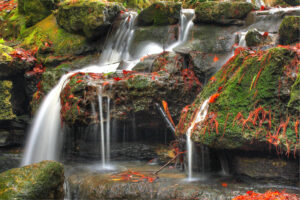“Mastering Exposure: Understanding Aperture, Shutter Speed, and ISO for Perfectly Balanced Photos”
Understand The Exposure Triangle: A Comprehensive Guide to Perfecting Your Shots
Understanding the Exposure Triangle is essential for achieving optimal results in photography. This principle encompasses the interrelationship between three key elements: aperture, shutter speed, and ISO. By manipulating these settings, photographers can control the exposure of their images. In this article, we will delve deeper into the Exposure Triangle and explore how it applies to various shooting scenarios.
1. Freezing Motion:
Imagine you’re capturing fast-moving subjects, such as athletes in action or wildlife in their natural habitat. To freeze the motion and ensure sharpness, a high shutter speed is crucial. Start by setting a fast shutter speed, like 1/1000 of a second. However, this increase in shutter speed necessitates adjustments to the other two elements of the Exposure Triangle.

– Aperture: To maintain the correct exposure, open the aperture wider. For example, if your initial setting was f/8, consider changing it to f/4, allowing more light to enter the lens. This adjustment also helps create a shallower depth of field, isolating the subject from the background.
– ISO: Increasing the ISO sensitivity can compensate for the wider aperture and faster shutter speed. By raising the ISO value from, let’s say, 200 to 800, the camera’s sensor becomes more receptive to light, enabling proper exposure.
2. Capturing Landscapes:
Landscape photography often calls for a wider depth of field to keep both foreground and background in sharp focus. Here’s how to adjust the Exposure Triangle for this scenario:
– Aperture: Select a smaller aperture (higher f-number) such as f/16 or f/22. This limits the amount of light entering the lens, increasing the depth of field and ensuring sharpness from foreground to background.
– Shutter Speed: Slower shutter speeds are generally acceptable when photographing landscapes, as there’s no immediate movement to freeze. Aim for a shutter speed of around 1/30 of a second or even slower, depending on the lighting conditions.
– ISO: To maintain proper exposure with a smaller aperture and slower shutter speed, a lower ISO setting is typically preferred. Set the ISO to its base value, usually 100 or 200, to minimize noise and retain optimal image quality.
3. Low-Light Situations:
Photographing in low-light environments poses unique challenges. To capture well-exposed images in such conditions, consider the following adjustments:
– Aperture: In low light, it’s advisable to use a wider aperture (lower f-number) to allow more light into the camera. Start with an aperture of around f/2.8 or lower, depending on your lens capabilities.
– Shutter Speed: Since a longer exposure time increases the risk of motion blur, try to keep the shutter speed as fast as possible while maintaining proper exposure. If necessary, consider using a tripod or other stabilization methods to compensate for slower shutter speeds.
– ISO: In low-light situations, higher ISO values become necessary to achieve proper exposure. Experiment with ISO settings, but be cautious not to increase it excessively, as it may introduce noise and impact image quality.
Conclusion:
Understanding the Exposure Triangle is fundamental to achieving optimal exposure in various shooting scenarios. By understanding the relationship between aperture, shutter speed, and ISO, we as photographers can adapt our settings to capture the desired image. Remember to consider the specific demands of each situation, whether it involves freezing motion, capturing landscapes, or shooting in low-light conditions. If understand the Exposure Triangle, you’ll be well on your way to improving your general photography and capturing stunning photographs in any environment regardless of the weather conditions or light levels.
If you would like to check out my YouTube channel you can do that here


Pingback: Night Time Photography: Capturing the Magic of Low Light | 2nd Square Photography
Pingback: What is Depth of field | 2nd Square Photography
Pingback: How to Photograph Waterfalls | 2nd Square Photography